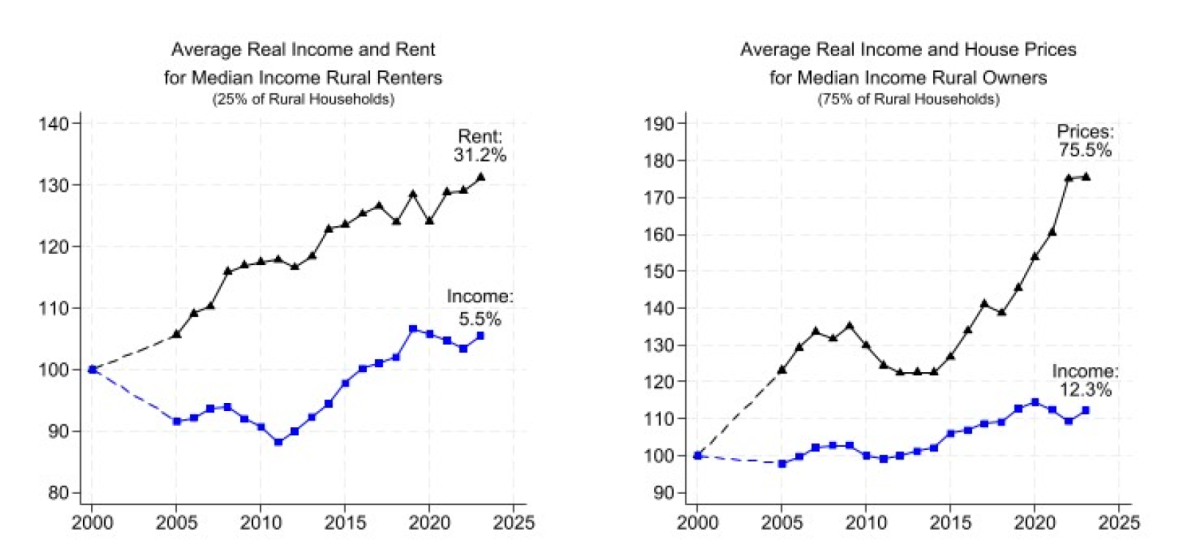The Deterioration of Housing Affordability in Rural America
Executive Summary
It is well known that housing costs have skyrocketed in suburban and urban areas across America since the turn of the century and especially in recent years, but it is less understood whether rural parts of the country have also seen a deterioration in housing affordability. This Council of Economic Advisers (CEA) brief establishes that the housing affordability challenge is also impacting rural America, as shown in the Figure below that plots cumulative income and housing cost growth for rural renters and homeowners relative to their year-2000 values (indexed to 100). The marked deterioration in affordability suggests a strong need for additional rural housing supply to tame costs and enable greater homeownership.

Key facts uncovered and documented in this brief include:
- Rural incomes have not kept up with rising rents.
As shown in the upper-left figure, real rents increased by 31.2 percent between 2000 and 2023, whereas the median real income of rural renting households only rose by 5.5 percent. - Real house prices have vastly outpaced incomes.
As shown in the upper-right figure, real rural house prices have risen at faster than 6x the pace of homeowner incomes, which is pushing homebuying further out of reach for young families. - Rural homeownership rates have declined at nearly all working ages.
Rural homeownership rates have declined for working-age Americans. For example, the fall in homeownership rates between 2000 and 2023 for rural households aged 31-35 is 3.2 percentage points and for households aged 36-40 is 3.8 percentage points.


